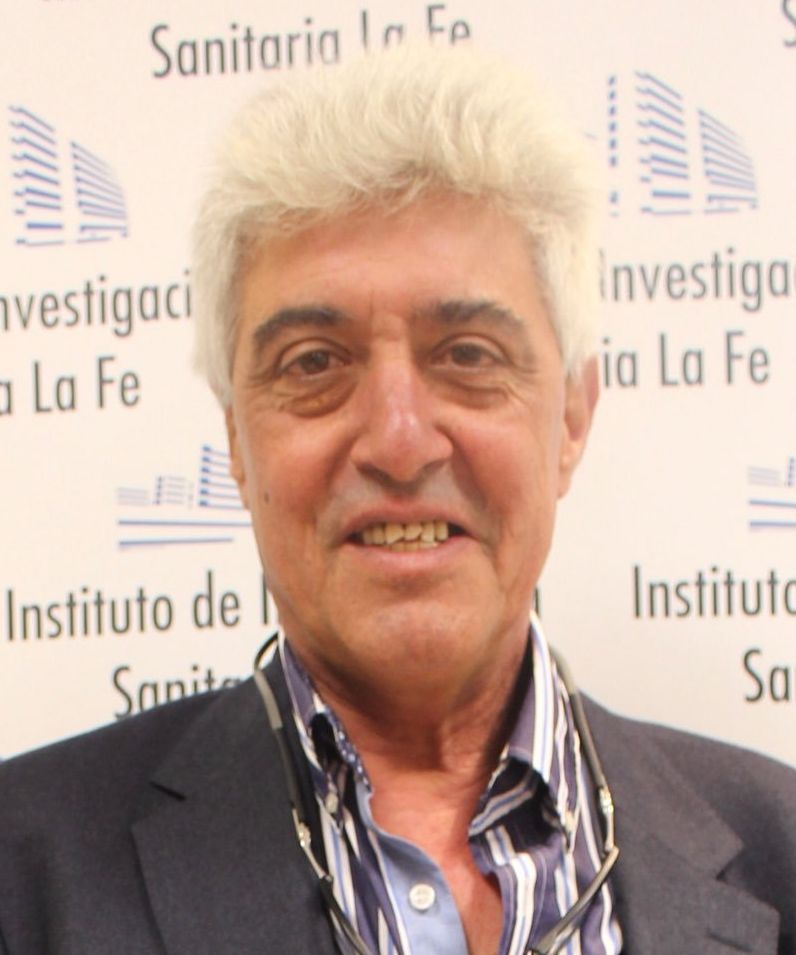Omidubicel Highly Effective UCB Alternative for Transplantation
Omidubicel significantly improved median time to neutrophil engraftment compared with standard umbilical cord blood transplantation in patients with hematologic malignancies.
Guillermo F. Sanz, MD, Ph

Treatment with the bone marrow transplant product omidubicel was associated with a significantly improved median time to neutrophil engraftment compared with standard umbilical cord blood (UCB) transplantation in patients with high-risk hematologic malignancies, according to results of a phase 3 trial that were presented during the Virtual 47th Annual Meeting of the EBMT.
In the intent-to-treat (ITT) population (n = 125) of the phase 3 study, the median time to neutrophil engraftment was 12.0 days (95% CI, 10.0-15.0) compared with 22.0 days (95% CI, 19.0-25.0) in the control UCB arm (P <.001). In the as-treated group (n = 108), these median times were 10.0 days (95% CI, 8-13) and 20.5 days (95% CI, 18-24), respectively (P <.001). Additionally, omidubicel was associated with a 41% reduction in the risk of death compared with standard UCB (HR, 0.59; 95% CI, 0.29-1.12; P = .16); however, the study was not powered to look at overall survival, explained lead study author Guillermo F. Sanz, MD, PhD.
“This global phase 3 randomized study demonstrates that transplantation with omidubicel results in faster hematopoietic recovery, fewer infections, and fewer days in hospital,” Sanz, of the Department of Hematology at Hospital Universitari i Politècnic la Fe, in Valencia, Spain, said in a virtual presentation during the meeting. “These data suggest that omidubicel should be considered as the new standard of care for patients eligible for umbilical cord blood transplantation.”
Omidubicel consists of hematopoietic stem cells and differentiated immune cells selected from a public cord blood bank that are expanded for 21 days ex vivo in a nicotinamide-based solution and combined with uncultured immune cells, including T cells. Nicotinamide is a form of vitamin B₃ that facilitates maintenance of the UCB function.
In the phase 3 study, 125 patients were randomized 1:1 to receive omidubicel (n = 62) or standard UCB (n = 63). To be eligible for enrollment, patients had to be between the ages of 12 years and 65 years, be candidates for allogeneic stem cell transplantation, and not have a matched donor. Overall, patients had high-risk acute myeloid leukemia (n = 60), acute lymphoblastic leukemia (n = 41), myelodysplastic syndromes (n = 9), chronic myeloid leukemia (n = 6), and lymphoma (n = 5), and rare leukemia (n = 4). A second group of individuals who received treatment as planned was also analyzed. In this group, 52 patients received omidubicel compared with 56 in the control arm.
The median age of patients was 41.5 years, 24% had low-risk disease, 42% had moderate-risk disease, and 34.5% had high/very high-risk disease. The myeloablative conditioning regimens were 2 total body irradiation-based regimens with thiotepa, fludarabine, and cyclophosphamide (48.5%) or 1 with thiotepa, busulfan, and fludarabine (44%). In the first cord blood unit, the HLA match was 4/6 in 73.5% of patients, 5/6 in 24.5%, and 6/6 in 2% of patients. In patients who received a second cord blood unit, which applied to the control arm only, the 4/6, 5/6, and 6/6 HLA matches occurred in 74%, 24%, and 2%, respectively. Additionally, 32.5% and 67.5% of patients had single and double intended UCB transplant, respectively.
In the ITT population, the cumulative day 42 incidence of platelet engraftment was 55% with omidubicel vs 35% with the control arm (95% CI, 0.03-0.35; P = .028). In the as-treated population, the median time to platelet engraftment was 37 days (95% CI, 33-42) with omidubicel and 50 days (95% CI, 42-58) for the control arm (P = .023).
Omidubicel recipients had a median 60.5 days alive and out of the hospital in the first 100 days posttransplant compared with a median 48.0 days for patients on the control arm (P = .005). There was a trend toward lower non-relapse mortality (P = .09) with omidubicel compared with the control arm; the risk for relapse was similar in both arms (P = .32). Moreover, the disease-free survival rate was higher with omidubicel vs that of the control arm (P = .68), but Sanz noted that, similar to the OS report, the trial was not powered to assess this end point.
Grade 2/3 bacterial or invasive fungal infection by 100 days in the ITT population was lower with omidubicel at 37% compared
with 57% in the control arm (P = .027). This was similar with viral infection rates at 10% vs 26% with omidubicel and control, respectively (P = .029). Sanz noted no differences in grade 2/3 acute graft-vs-host disease (GVHD) with the omidubicel and control arms (P = .18) nor with grade 3/4 acute GVHD (P = .33); this trend cascaded into chronic GVHD at 1 year (P = .57).
Reference:
Sanz GF, Stiff PJ, Cutler CS, et al. Results of a phase III randomized, multicenter study comparing omidubicel with standard umbilical cord blood transplantation (UCBT) in patients with high-risk hematologic malignancies following myeloablation. Presented at: 47th Annual Meeting of the EBMT; March 14-17, 2021; Virtual. Abstract GS2-7.